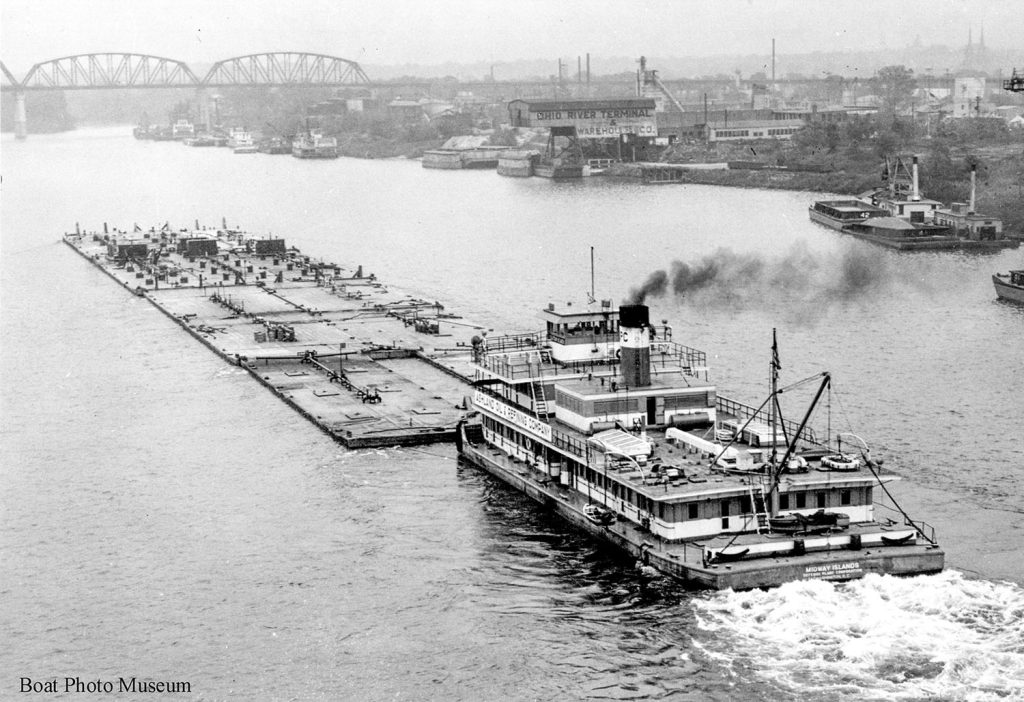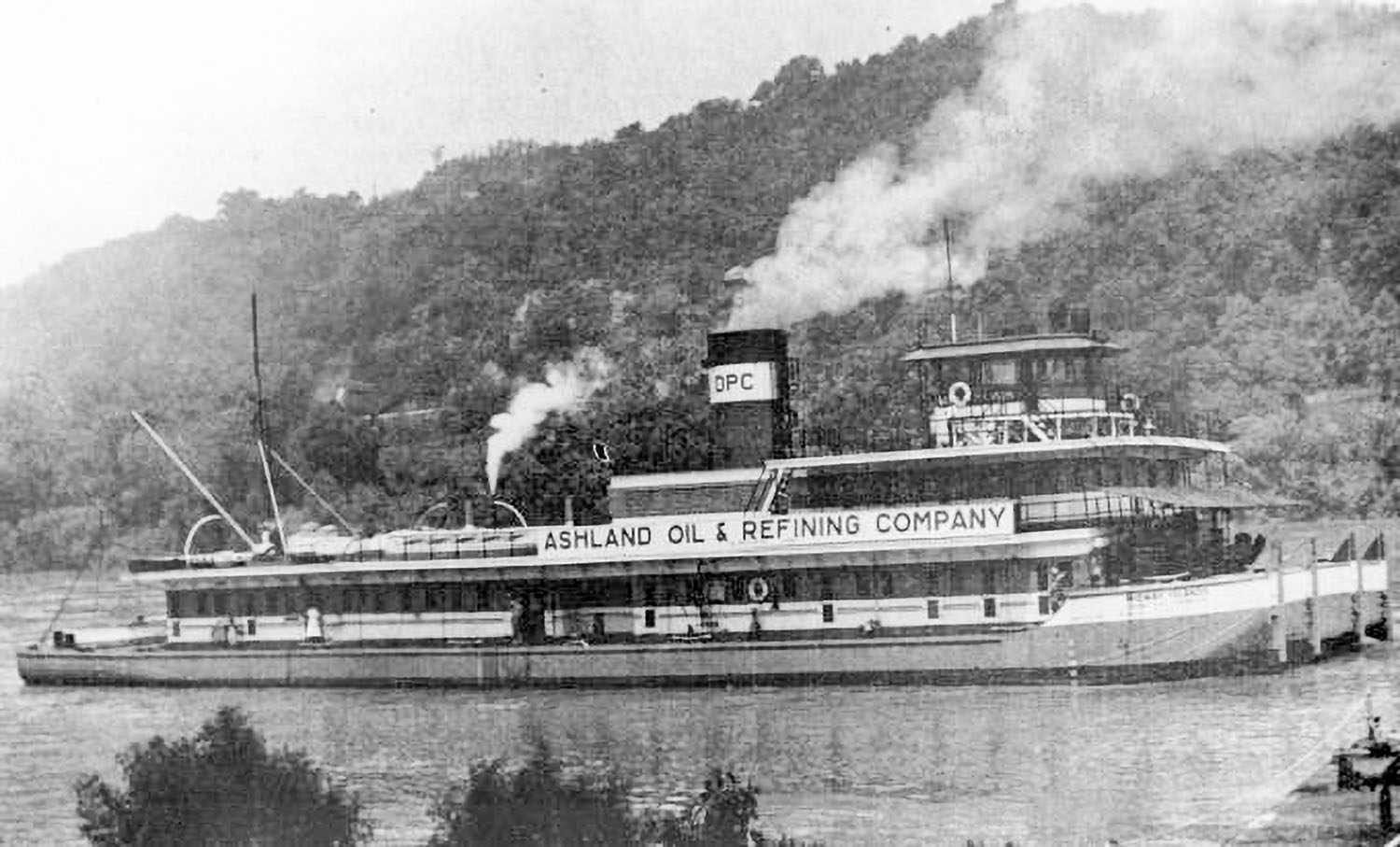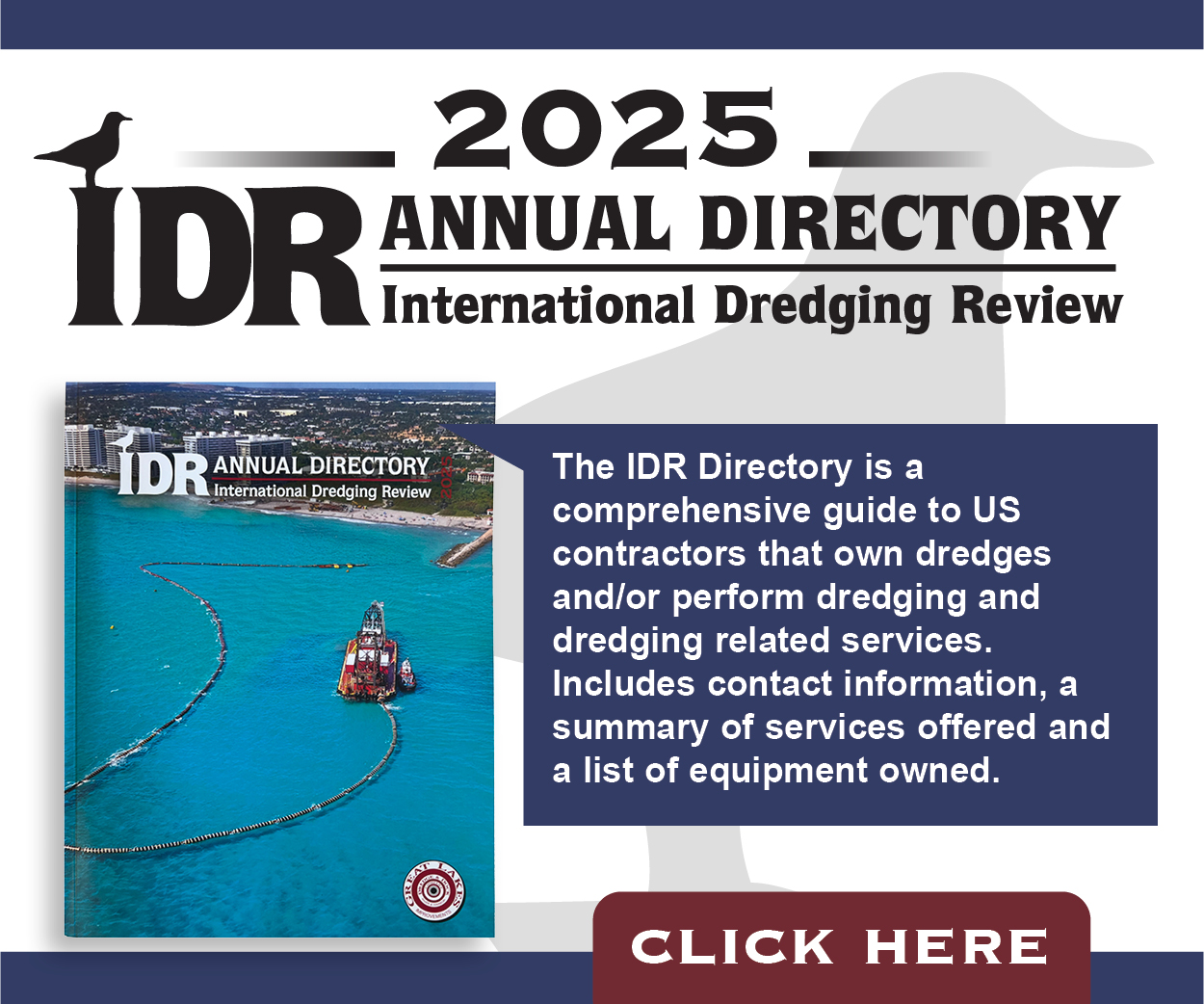The Reconstruction Finance Corporation was established in 1932 by the Hoover administration to help fight the Great Depression. At the outbreak of World War II, it became a part of the War Department. A subsidiary was the Defense Plant Corporation (DPC), which financed wartime factories and shipyards that were government-owned and leased to operators. In some cases, the DPC owned equipment that was leased to companies. This was the case with 21 steam prop towboats that were built for inland river service and all named for Pacific battles. This column will deal with one of these towboats.
The DPC towboats, as they would come to be known, were very different from any seen on the rivers before. Much like the Liberty Ships, they were built quickly due to the pressing war needs. They were constructed not only by established shipyards, but also by some that had been formed for producing wartime vessels. One company that formed a yard for this purpose was the Mount Vernon Bridge Company of Mount Vernon, Ohio, which had been building bridges since the 1880s. As its location was some 160 miles from the Ohio River, the company built a shipyard at Ironton, Ohio, near Mile 327.
Numerous landing craft and barges were built by the firm, but the largest vessels they produced were two of the DPC towboats, the Lunga Point (Way’s T1661) and the Midway Islands (T1807). Given that Ashland, Ky., is near Ironton, it is no surprise that the Ashland Oil & Refining Company (AO&R) was selected to operate the Midway Islands, which came out in May 1944. The boat had a steel hull that was 180 by 52 feet and was powered by two four-cylinder, triple-expansion engines that were 16’s, 26’s, 32’s, 32’s with 2-foot stroke developing 2,000 hp. at 185 rpm. The four-blade props were 108 inches in diameter with 79-inch pitch. Steam was supplied by a Foster-Wheeler “A” type generator, 275 psi. at 100-degree superheat, burning Bunker C fuel oil.
The lower cabin of the Midway Islands was steel, but the upper cabin and pilothouse were of wood construction. A single smokestack was behind the second cabin. The head of the boat was one of the strangest features of the DPC towboats. This head was very high, standing 8–10 feet above the waterline. While there were foot and handholds built into the headlog, most often a ladder had to be put down to access loads in tow. Wiring the high head to loads was also a difficult proposition. Though a band on the stack bore the letters “DPC,” along the second deck handrail was a large sign that boldly stated “ASHLAND OIL & REFINING COMPANY.”
The June 1944 issue of the Ashland Oil Log, the house magazine of AO&R, had a feature story headlined “NEW MILLION DOLLAR BOAT JOINS OUR FLEET.” The article detailed a May 27, 1944, excursion and picnic aboard the boat for the AO&R office staff, and an open house for the general public at Ashland where some 4,000 people toured the boat. Photos of the boat were included that featured members of the crew such as Capt. Robert Smith (mentioned in the column about the J.C. Rawn in The Waterways Journal April 8, 2024, issue), master of the boat, and Albert Pottshard, chief engineer. Following the festivities at Ashland, the big boat departed south for Louisiana to pick up 10 barges of crude oil.

The Midway Islands began routinely delivering crude oil from the south to the AO&R refinery at Catlettsburg, Ky. During a stop at Mt. Vernon, Ind., in April 1945, 15-year-old Lonnie Ryan was hired on the bank by Capt. Smith. Ryan would be on the Midway Islands for most of the next 10 months, until being laid off when the boat was turned back in to the government. In a few months he would be back decking for AO&R, leaving once for a short period, then coming back in 1948 to spend 54 years with the company before retiring as master of the Superamerica for what was then known as Marathon Ashland Petroleum.
Continuing to do trip work until he was 88, Capt. Ryan is now 94 and can vividly recall his time aboard the Midway Islands, down to the colors it was painted and construction details. He said that the cabin interior was paneled in very thin Masonite that would break if leaned against or hit with a broom or mop handle.
AO&R would also briefly operate the DPC steamer Wake Islands before the end of hostilities. These would be the only steamboats that the company ever ran. The late Mr. Robert L. Gray, long in the marine department of the company, has related that there were a host of problems in operating the DPCs, mainly with the steam generators and machinery. It was so bad at first that an industry committee was formed to try to improve the boats.
After the war, the government sold the DPC boats to private ownership. The Midway Islands was sold in 1946 to Sohio Petroleum and renamed Sohio Southern (T2320). In 1949, it was sold to American Barge Line, which changed the name to H.A. Bayless (T0999). It was retired in 1959, and the Shipbuilding History site indicates that it was converted into a dredge named Senator Allen J. Ellender. Several of the DPC towboats were converted into dredges, and others were made into landing boats and steam plants, extending their usefulness beyond their career as towboats.
Caption for top photo: Str. Midway Islands landing at Ashland, Ky., May 27, 1944. (Author’s collection)
Capt. David Smith can be contacted at davidsmith1955obc@gmail.com.




